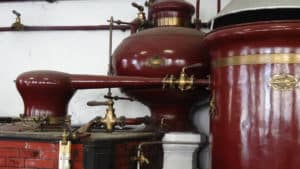
Moorish shape head capital and swan neck
Over time the shape of the still slowly changed. The most spectacular change is the capital, part above the pot, going from the Moorish shape
Passed the porch we enter the courtyard, closed by a beautiful Charentaise, a Napoleon III style residence with two wings, one built before the phyloxera crisis and the other after.
In a corner of the courtyard hides a small door blackened by the torula, the local mushroom. This gives you access to the estate’s distillery. There, part of the estate’s wine production is distilled to be then delivered to large trading houses. Another part is kept for the production of cognacs and pineaux marketed directly by the estate under its own brand.
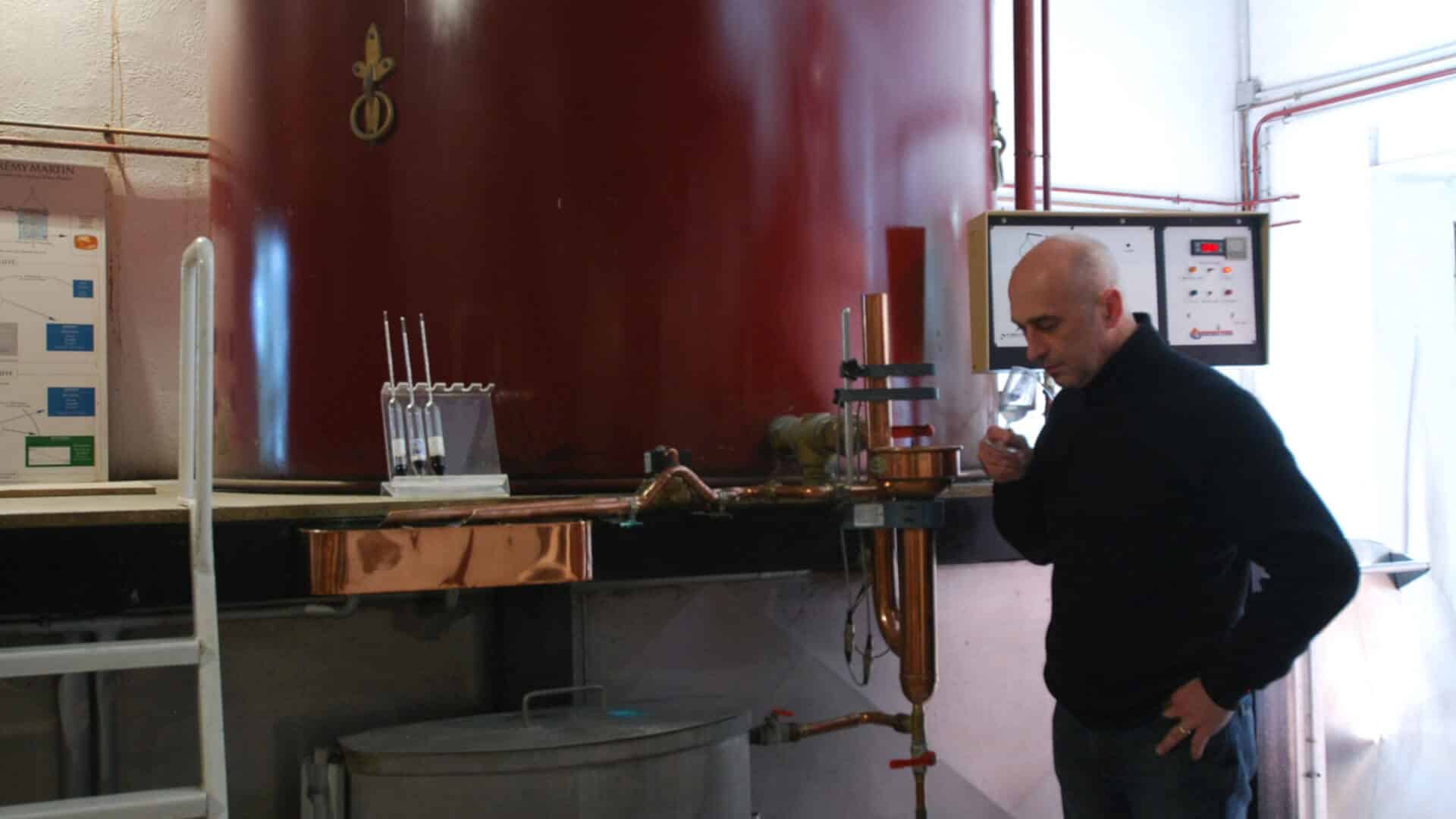
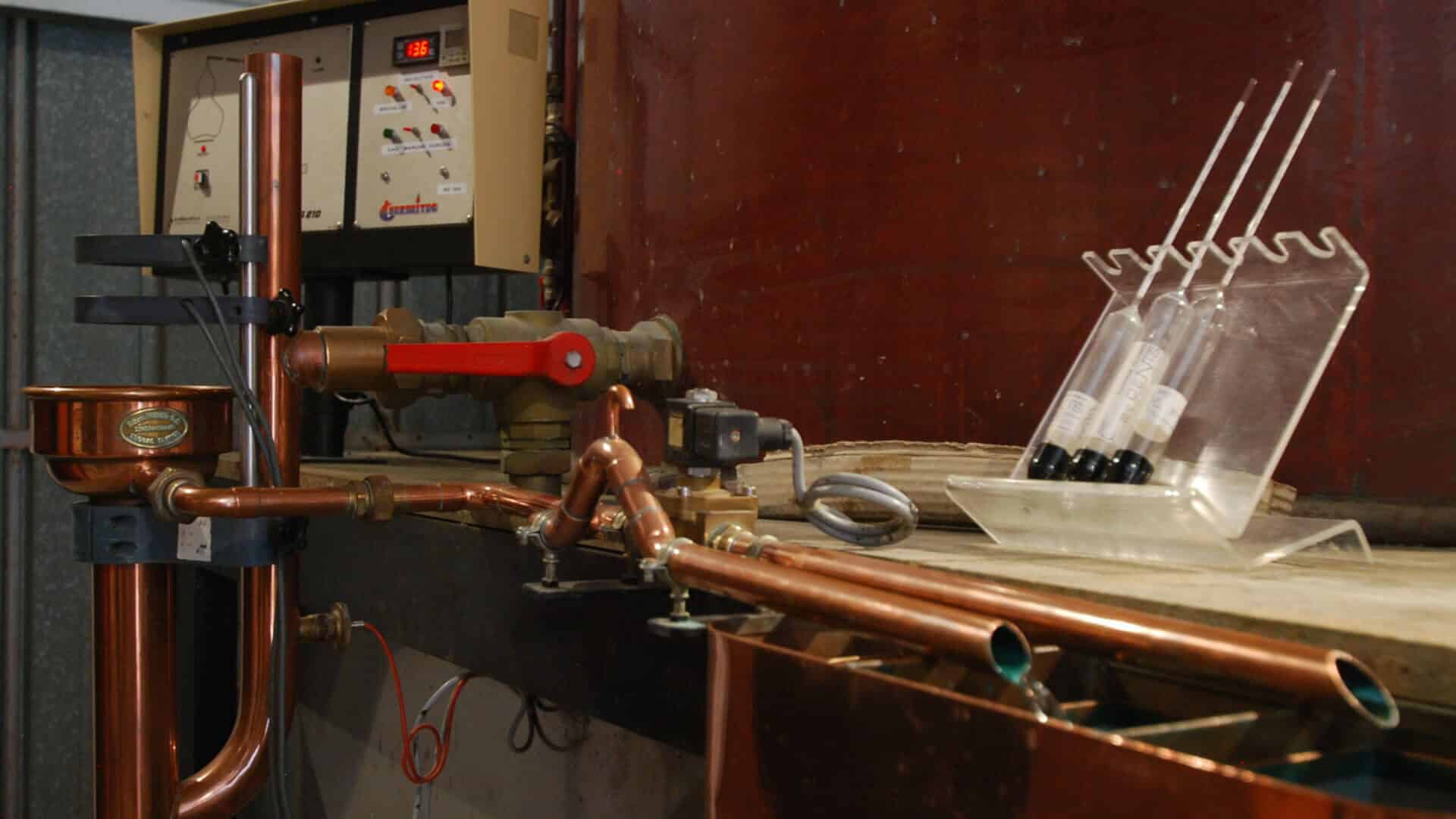
The thermometer located at the top of the boiler is used to control the temperature in the pot. The contents of the cucurbite (the pot) must evaporate slowly, the aromas are naturally selected in the onion or olive-shaped capital above the pot before being carried by the vapors in the swan neck then into the cooler coil.
The wines and the scrambles must not boil too much, otherwise the entire contents of the pot would go directly to the cooling pipe causing the loss of all the distillate or even the destruction of the boiler by implosion !!!!
From where a rigorous and regular control of the temperature by the still throughout the heating.
After 48 hours and 4 distillation cycles, the wine is transformed into brandy. The eaux-de-vie are temporarily stored near the distillery before leaving for the cellars of several trading houses as well as a part kept in the cellars of the estate.
After a few years, the estate’s eaux-de-vie will become Pineaux des Charentes and Cognacs from Grande Champagnes, considered among the best of the vineyard’s artisanal products.
And, in the cellars and the family paradise sleep some very old centuries-old blends …
But, to access it, another hidden door is to be found. Without doubt another visit to the estate.

Over time the shape of the still slowly changed. The most spectacular change is the capital, part above the pot, going from the Moorish shape
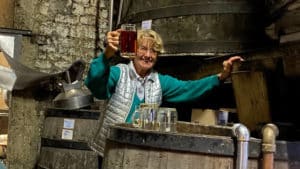
Let’s welcome 2021 under the best auspices. Your 2021 destination : the Cognac vineyards and the Charente valley, of course!
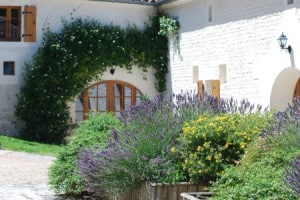
Guest house nestled in the Cognac vines, ideal for bringing together your tribe and for lovers of spirits, with rooms and suites
By subscribing to our newsletter you will receive our news from the Cognac and Charentes vineyards a few times a year.
In accordance with GDPR rules, you can cancel your registration at any time.
| Cookie | Duration | Description |
|---|---|---|
| pll_language | 1 year | The pll _language cookie is used by Polylang to remember the language selected by the user when returning to the website, and also to get the language information when not available in another way. |
| Cookie | Duration | Description |
|---|---|---|
| _gat | 1 minute | This cookie is installed by Google Universal Analytics to restrain request rate and thus limit the collection of data on high traffic sites. |
| Cookie | Duration | Description |
|---|---|---|
| CONSENT | 16 years 3 months 24 days 7 hours | These cookies are set via embedded youtube-videos. They register anonymous statistical data on for example how many times the video is displayed and what settings are used for playback.No sensitive data is collected unless you log in to your google account, in that case your choices are linked with your account, for example if you click “like” on a video. |
| _ga | 2 years | The _ga cookie, installed by Google Analytics, calculates visitor, session and campaign data and also keeps track of site usage for the site's analytics report. The cookie stores information anonymously and assigns a randomly generated number to recognize unique visitors. |
| _gid | 1 day | Installed by Google Analytics, _gid cookie stores information on how visitors use a website, while also creating an analytics report of the website's performance. Some of the data that are collected include the number of visitors, their source, and the pages they visit anonymously. |
| Cookie | Duration | Description |
|---|---|---|
| fr | 3 months | Facebook sets this cookie to show relevant advertisements to users by tracking user behaviour across the web, on sites that have Facebook pixel or Facebook social plugin. |
| IDE | 1 year 24 days | Google DoubleClick IDE cookies are used to store information about how the user uses the website to present them with relevant ads and according to the user profile. |
| test_cookie | 15 minutes | The test_cookie is set by doubleclick.net and is used to determine if the user's browser supports cookies. |
| VISITOR_INFO1_LIVE | 5 months 27 days | A cookie set by YouTube to measure bandwidth that determines whether the user gets the new or old player interface. |
| YSC | session | YSC cookie is set by Youtube and is used to track the views of embedded videos on Youtube pages. |
| yt-remote-connected-devices | never | These cookies are set via embedded youtube-videos. |
| yt-remote-device-id | never | These cookies are set via embedded youtube-videos. |
| yt.innertube::nextId | never | These cookies are set via embedded youtube-videos. |
| yt.innertube::requests | never | These cookies are set via embedded youtube-videos. |
| _fbp | 3 months | This cookie is set by Facebook to display advertisements when either on Facebook or on a digital platform powered by Facebook advertising, after visiting the website. |
| Cookie | Duration | Description |
|---|---|---|
| BkCheckoutSession | session | This cookie is set by the Booking kit. This cookie is used for operation of the shop. |
| BkOpSession | 1 day | No description available. |
| cookielawinfo-checkbox-functional | 1 year | The cookie is set by GDPR cookie consent to record the user consent for the cookies in the category "Functional". |
| slimstat_tracking_code | 30 minutes | No description available. |
| _gat_bkTracker | 1 minute | No description available. |